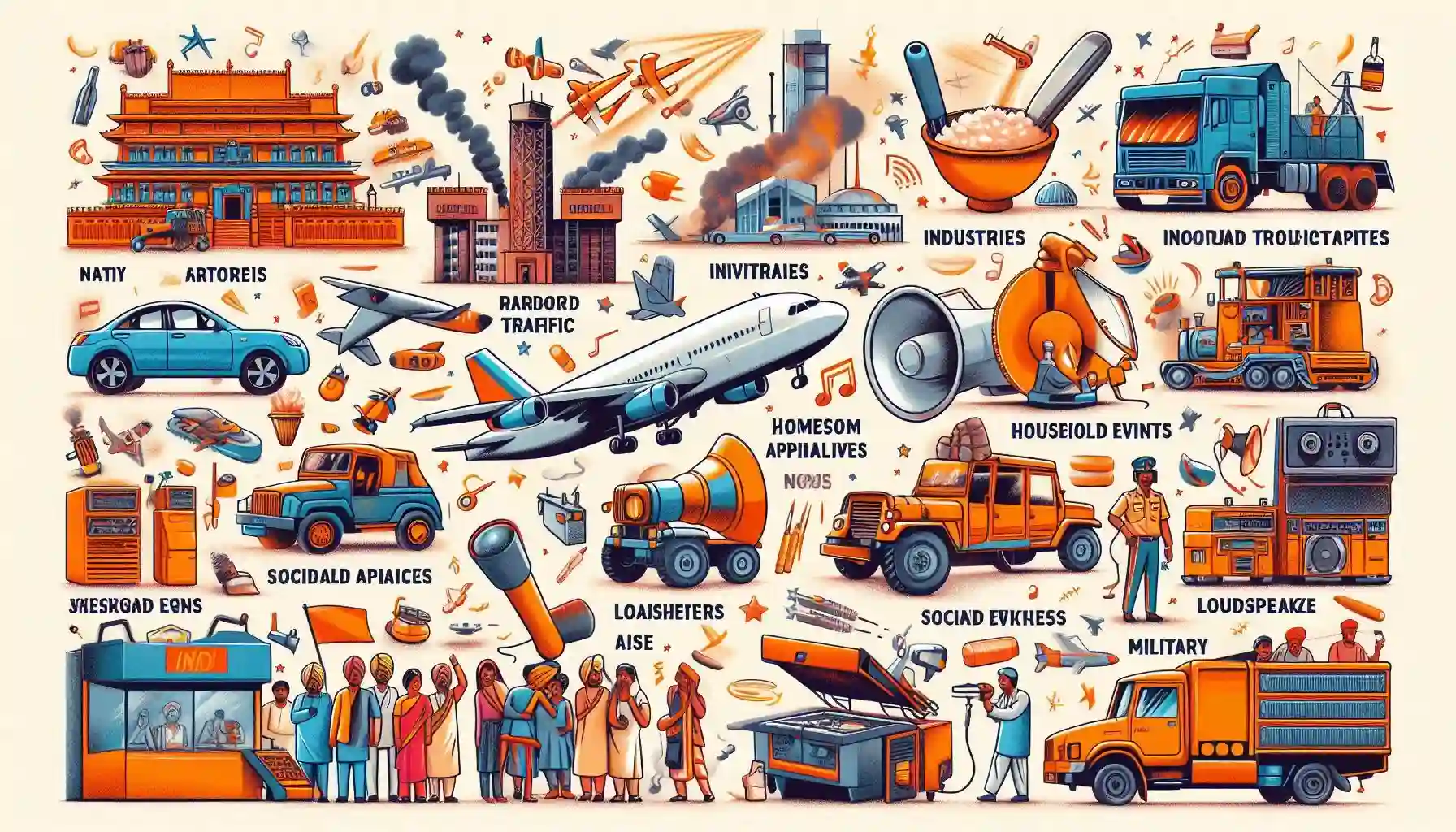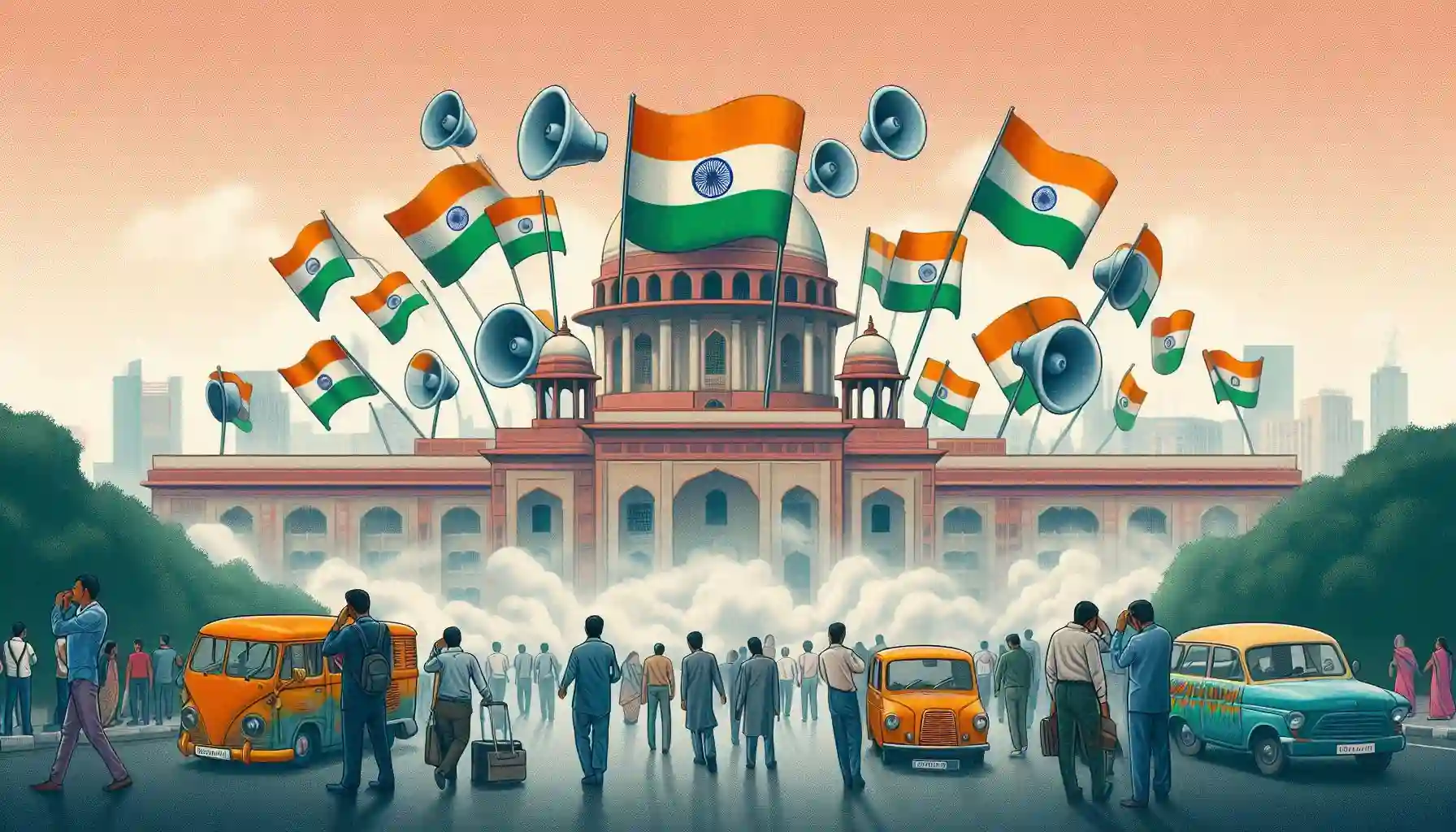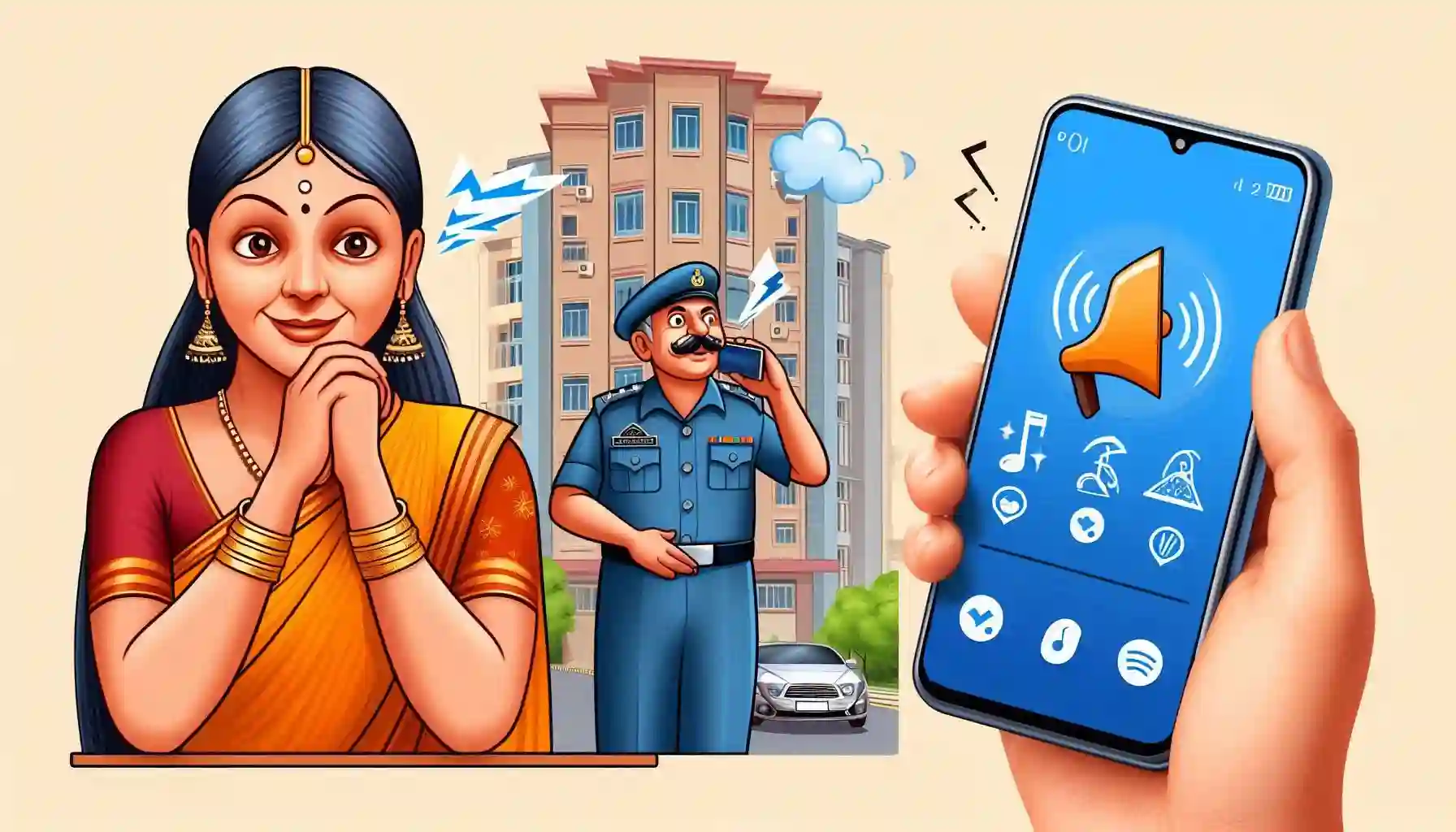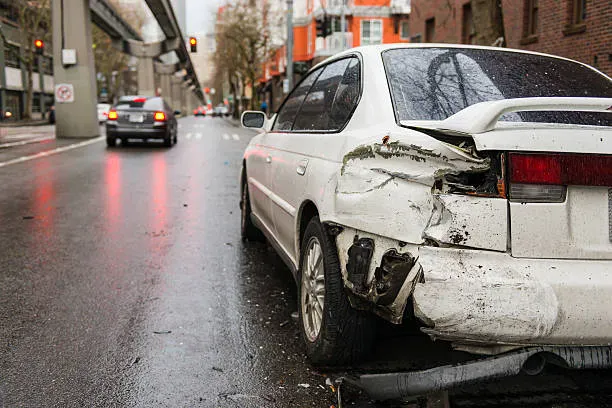Understanding Noise Pollution: Definitions, Sources, Regulations, and Remedies
Soft music is pleasant for our ears, but loud music can be irritating and disturbing. When sound becomes too loud and bothersome, it’s called noise.
Over the past few decades, noise has become a significant environmental issue due to rapid urbanization(Rapid urbanization means that cities are growing very quickly. More people are moving into cities, and new buildings and infrastructure are being built fast. This can lead to crowded living conditions and increased demand for services like water and transportation.).
Noise negatively impacts our health and well-being. It comes from many sources, including transportation, industries, construction, businesses, public events, and even our homes. We encounter noise throughout the day and sometimes at night, such as during public gatherings. Prolonged exposure(Being around something for a long time) to loud noise can be harmful to our health and also affect other living beings.
advertisement
Definition of Noise Pollution.
Have you ever wondered how we hear sounds from different sources like voices, violins, or media players? These sources create vibrations in the form of sound waves. These waves cause changes in air pressure, which travel to our ears and are detected by our nerves, allowing us to hear the sound.
Sound is a type of energy that our ears can detect. Some sounds can be heard, while others cannot. The sounds we can hear are called “audible.” According to Section 2(a) of the Air (Prevention and Control of Pollution) Act, 1981, noise is considered a form of air pollution
There is no physical difference between sound and noise. However, "noise" comes from the Latin word "nausea," meaning 'unwanted sound' or 'sound that is loud, unpleasant, or surprising.' Noise pollution refers to unwanted sounds in the environment that negatively affect our health and well-being. Unlike physical pollutants, noise pollution consists of sound waves that disrupt the natural environment and can be harmful to both people and wildlife..
Sources of Noise Pollution.
Nature itself doesn’t usually cause noise pollution, but insects, birds, and animals can produce loud sounds that disturb people and other animals. For example, insects like cicadas and birds can make a lot of noise. While these natural noises are not usually harmful on their own, they can become overwhelming when combined, especially during natural events like thunderstorms, strong winds, or storms.

advertisement
Human-Made Sources of Noise Pollution
-
Transportation:
- Road Traffic: This includes noise from vehicles’ engines and tires interacting with the road. At low speeds, engine noise is more noticeable, while at high speeds, tire noise becomes dominant. Heavy vehicles and electric cars have different noise characteristics.
- Railways: Trains produce noise from their engines and the interaction between wheels and rails. High-speed trains also generate aerodynamic noise(Aerodynamic noise is the sound made by air moving around things, like cars or planes, as they move.), and additional noise comes from starting, stopping, and crossing points.
- Aircraft: Aircraft noise comes from both in-flight engines and ground operations at airports. Ground noise from airport facilities can also be a significant issue, though aircraft noise affects fewer people compared to road traffic noise.
-
Industrial Noise: Industries generate noise through activities like product fabrication, assembly, power generation, and processing. Examples include steel mills, coal power plants, car assembly plants, and mining operations. This noise can be continuous or intermittent and often includes loud and low-frequency sounds. Workers in industrial settings are usually more affected than nearby residents.
-
Construction Noise: Noise from construction varies depending on the type of work, such as demolition, excavation, or piling. This noise includes heavy machinery, breaking concrete, cutting steel, and other activities. The impact depends on the construction site’s location, hours of work, and noise characteristics.
-
Household Sources: Domestic appliances like mixers, pressure cookers, air conditioners, and washing machines create noise indoors. Entertainment equipment such as radios, TVs, and loudspeakers also contribute to household noise.
-
Commercial Places: Noise from markets, shopping malls, offices, and their associated equipment like generators and air conditioners creates additional pollution.
-
Social Events: Public events often use loudspeakers for announcements or entertainment, contributing to noise pollution. This includes events like weddings, elections, or concerts.
-
Defense Equipment: Military activities, such as artillery fire, rocket launches, and aircraft exercises, produce high-impact noise that can even damage buildings in extreme cases.
advertisement
Limits and Rules for Noise Pollution.
The Central Pollution Control Board put together a special team to deal with noise pollution. This team came up with suggestions for noise limits in the air around us, as well as for cars, home appliances, and construction equipments, which are notified under Schedule of The Noise Pollution (Regulation and Control) Rules, 2000 as given below:
Here are the noise limits for different types of areas, measured in decibels (dB(A)):
- Industrial Area:
- Day: 75 dB(A).
- Night: 70 dB(A).
- Commercial Area:
- Day: 65 dB(A).
- Night: 55 dB(A).
- Residential Area:
- Day: 55 dB(A).
- Night: 45 dB(A).
- Silence Zone:
- Day: 50 dB(A).
- Night: 40 dB(A).
- Day Time: 6:00 a.m. to 10:00 p.m.
- Night Time: 10:00 p.m. to 6:00 a.m.
How Noise Pollution Affects Us.

advertisement
Factors Influencing Noise Impact:
- Characteristics of Noise Sources: Instantaneous, intermittent, or continuous noise levels can affect annoyance. Steady noise is less bothersome compared to noise that constantly changes in loudness.
- Time of Day: Noise during the night, especially in residential areas, can disrupt sleep and is generally more problematic.
- Location of Noise Source: The impact also depends on the noise level, duration of exposure, and proximity to noise-sensitive areas.
Health Impacts:
1. Auditory (Hearing) Effects:
- Acoustic Trauma: Immediate, permanent damage from sudden loud noises like explosions.
- Tinnitus: Ringing or buzzing in the ears caused by noise exposure.
- Temporary Hearing Loss: A temporary reduction in hearing after exposure to high noise, which can recover with rest in a quiet environment.
- Permanent Hearing Loss: Long-term damage from chronic noise exposure, leading to irreversible hearing loss.
2. Non-Auditory Effects:
- Sleeping Disorders: Noise can disrupt sleep patterns, causing difficulty falling asleep, frequent awakenings, and increased stress. Prolonged exposure to noise above 30 dB can disturb sleep.
- Cardiovascular Disturbances: High noise levels are linked to elevated blood pressure, heart rate, and other cardiovascular issues. Chronic exposure above 65 dB or acute exposure above 80-85 dB can exacerbate these conditions.
- Endocrine Responses: Noise can increase levels of stress hormones like adrenaline and cortisol, contributing to aggression, depression, and migraines.
- Cognitive Impairment: Noise affects learning and task performance, particularly in children and workplaces. It can impair reading, problem-solving, and memory.
- Negative Social Behavior: High noise levels can lead to increased irritation, aggression, and a sense of helplessness. Annoyance is influenced by the type of noise and individual sensitivity.
advertisement
3. Mental Health:
Noise pollution may make the problem worse any underlying mental health issues. Children exposed to noise levels above 55 dB may experience decreased attention and increased oppositional behavior. Noise exposure is also linked to higher use of sleep aids and mental health hospital admissions, though the relationship remains complex and not fully understood.
4. Impact on Ecosystems:
- Animal Behavior: Many animals rely on sound for communication and survival. High noise levels can disrupt their natural behaviors, including feeding, mating, and defense. Some species adapt to urban noise, but it can still have long-term effects.
- Marine Ecosystems: Underwater noise from ships and industrial activities can interfere with marine mammals' communication and navigation. High-frequency noise can cause hearing loss, and sudden, intense noises can result in blast trauma(Blast trauma refers to injuries caused by explosions.), damaging their hearing.
Understanding these impacts highlights the need for effective noise management to protect both human health and wildlife.

advertisement
Reporting Noise Problems.
If you're bothered by noise that causes you annoyance, discomfort, or injury, or if you believe noise levels exceed acceptable limits by 10 dB(A) or occur between 10:00 p.m. and 6:00 a.m., you can file a complaint with the following authorities:
-
Police:
- Visit your nearest police station.
- Call 112 (Emergency Response Support System (ERSS)) for immediate assistance.
- File an online complaint through your State’s police complaint portal.
-
Central and State Pollution Control Boards:
- Central Pollution Control Board (CPCB):
- Function: Manages air and noise pollution under the Environment (Protection) Act, 1986.
- Location: Headquartered in New Delhi with regional offices in various states.
- State Pollution Control Boards (SPCB):
- Function: Each state has an SPCB office where you can file complaints about:
- Vocal or instrumental music.
- Loud noises from instruments, loudspeakers, or construction equipment.
- Firecracker noise.
- Business-related noise.
- Function: Each state has an SPCB office where you can file complaints about:
- Central Pollution Control Board (CPCB):
Visit the local State Pollution Control Boards office: The State Pollution Control Boards can issue orders to control or regulate noise and may offer the person causing the noise an opportunity to respond before finalizing any orders.
-
The Courts:
District Magistrate:
- Function: Can issue temporary or permanent orders to stop or regulate noise pollution.
- Visit the nearest District Magistrate’s Court with legal assistance.
- The Court can issue injunctions or orders to address the noise.
By reaching out to these authorities, you can address and manage noise pollution effectively and ensure a quieter environment.
advertisement
Punishments for Noise Pollution.
Causing Public Nuisance:
- Definition: Making noise that injures, endangers, or annoys the public can be considered a public nuisance. Example: Playing loud music at midnight that disturbs your neighbors.
- Punishment:
- Fine: Up to ₹1000. (Section 292, The Bharatiya Nyaya Sanhita, 2023)
- Repeated Offenses: If you continue making noise after being instructed to stop by the Court, you may face:
- Jail Time: Up to 6 months.
- Fine: In addition to jail time, a fine may be imposed. (Section 293, The Bharatiya Nyaya Sanhita, 2023)
Causing Environmental Pollution:
According to Section 15 of The Environment (Protection) Act, 1986
- Definition: Noise pollution that significantly harms the environment and surroundings is punishable under environmental laws. Example: Persistent loud noise from construction that disrupts daily life.
- Punishment:
- Initial Offense:
- Jail Time: Up to 5 years.
- Fine: Up to ₹1 Lakh or both.
- Continued Offenses:
- Additional Fine: ₹5000 for every additional day the pollution continues.
- Extended Jail Time: If noise pollution persists for more than a year despite orders to stop, the jail time can be extended up to 7 years.
advertisement
Frequently Asked Questions (FAQ’s):
1. What is a Silence Zone?
A Silence Zone is an area located at least 100 meters away from places like hospitals, schools, courts, religious sites, or any other area that the authorities have designated. It’s meant to be quiet to help maintain peace and reduce noise pollution.
2. Can using firecrackers at night be classified as noise pollution?
Yes, bursting firecrackers at night can be considered noise pollution. You can't use them in Silence Zones or between 10:00 p.m. and 6:00 a.m. Violating this rule can lead to penalties including a fine up to ₹1 lakh or imprisonment for up to five years.
Additionally, firecrackers that produce excessive noise (over 125 dB(A) or 145 dB(C) at 4 meters) are not allowed to be manufactured, sold, or used. The Department of Explosives ensures that only firecrackers within these noise limits are allowed and properly labeled for export, not for sale within India.
3. If the police halt the use of loudspeakers at my event, where can I file a complaint?
If the police stop you from using loudspeakers because of noise pollution, you can file a complaint with the nearest District Magistrate’s Court with help from a lawyer. The Court might allow you to use the loudspeakers temporarily if they meet noise rules.
You can also contact the State Pollution Control Board to review the situation and possibly change the police’s decision. For their contact details, visit their official website.
4. Can temples and mosques use loudspeakers for prayers according to religious practices?
Temples, mosques, and other religious places are not allowed to use loudspeakers for prayers if it causes disturbance to others. Although religious practices are respected, they must follow noise pollution laws.
The Court has ruled that no religion specifically requires the use of loudspeakers or drums, and using them can interfere with others' right to peace.Religious activities can use loudspeakers if they adhere to noise regulations and are conducted on days officially permitted by the State Government.
Typically, the government will designate specific days for such use, like during major festivals.
advertisement
References
- The Noise Pollution (Regulation and Control) Rules, 2000
- Section 2(a) of the Air (Prevention and Control of Pollution) Act, 1981
- Sources of Noise Pollution
- Noise Pollution And Its Control
- Filing A Noise Complaint
- Section 292 of The Bharatiya Nyaya Sanhita, 2023
- Section 293, The Bharatiya Nyaya Sanhita, 2023
- Section 15 of The Environment (Protection) Act, 1986

Written by Ruthvik Nayaka
Ruthvik Nayaka is a final year law student, his interests lie in areas including, but not limited to, Corporate Law and taxation law. He is also the EN-ROADS Climate Ambassador. He facilitates climate-workshops, climate action simulation games and group meetings.
advertisement
Further Reading
advertisement






